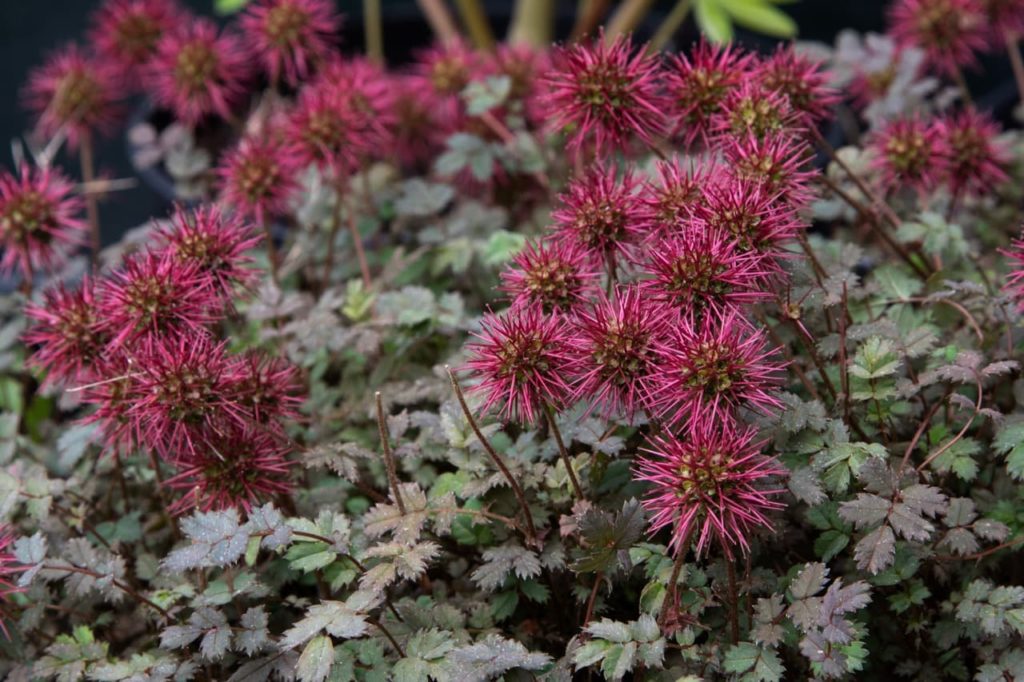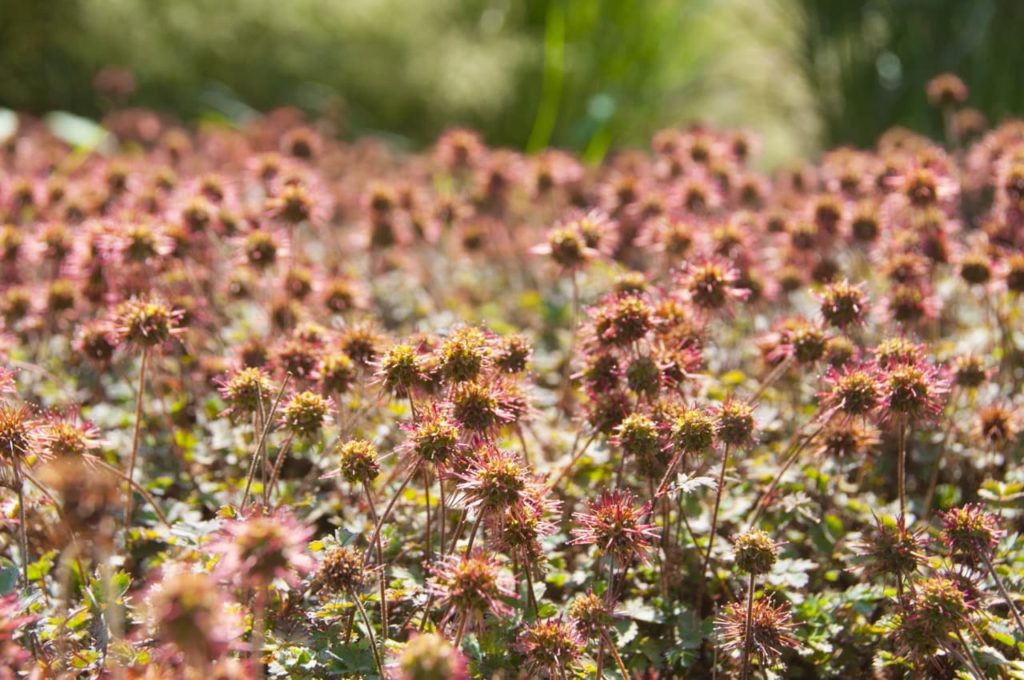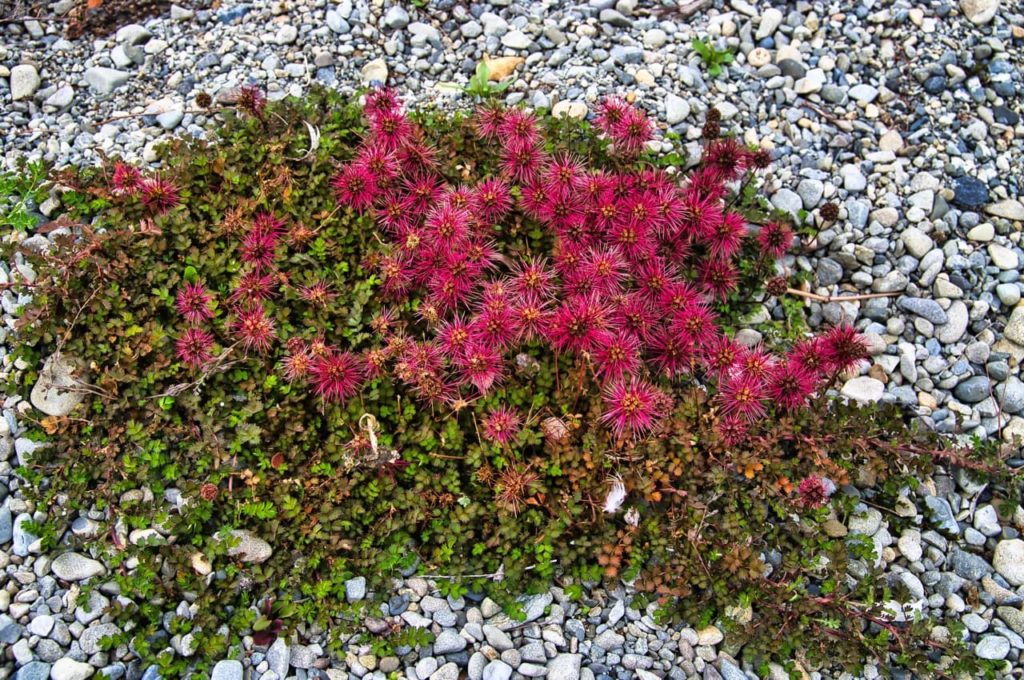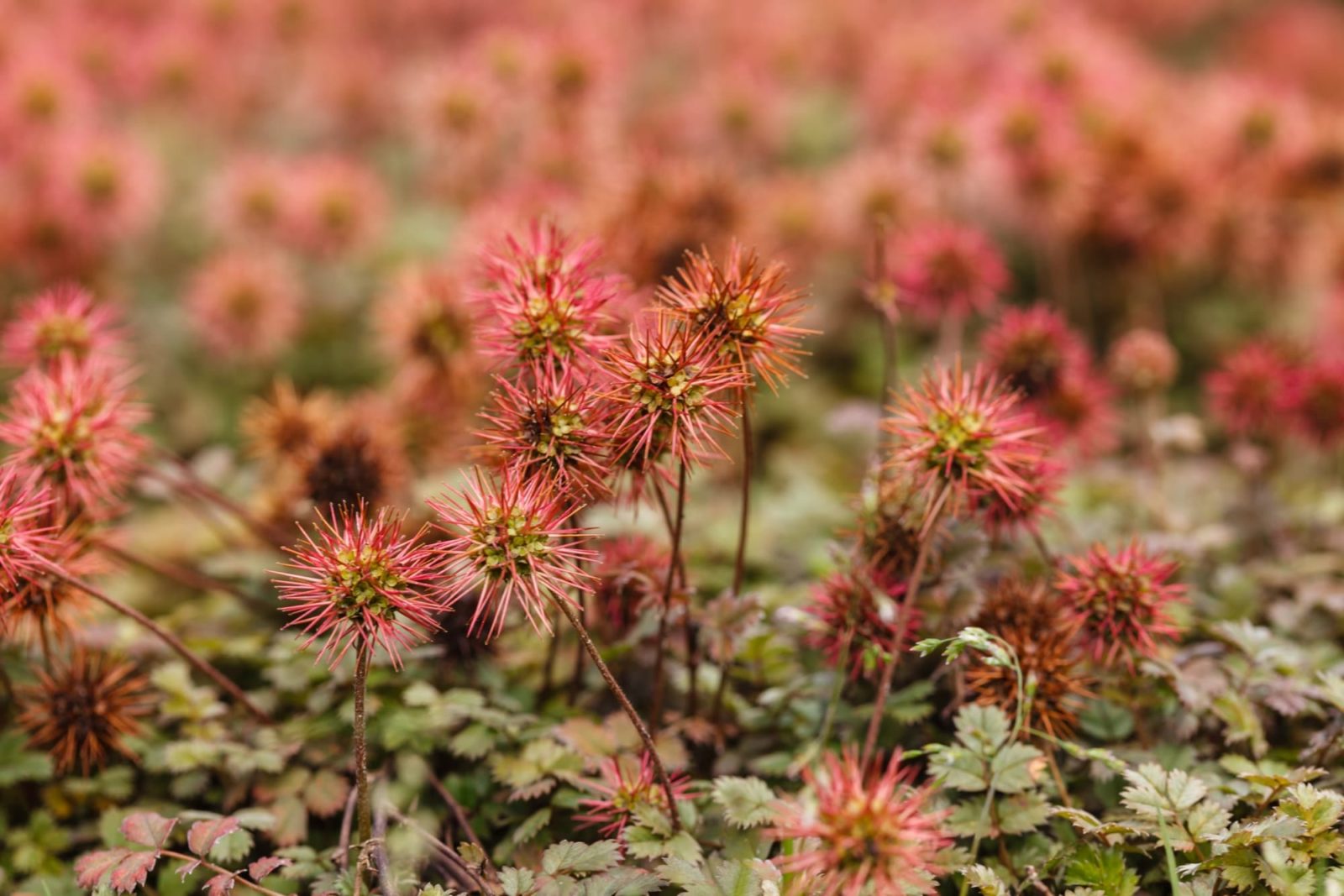ALPINES > ACAENA

Elizabeth is a Permaculture Garden Designer, Sustainability Consultant and Professional Writer, working as an advocate for positive change. She graduated from the University of St. Andrews with an MA in English and Philosophy and obtained a Diploma in Applied Permaculture Design from the Permaculture Association.
Reviewed By DAN ORI

Dan has over 27 years’ under his belt caring for plants and gardens. Working as a Horticultural Instructor and Consultant, he draws on a diverse range of experience that includes working as a Head Gardener, Tree Surgeon, Garden Centre Trouble Shooter, and writer of academic papers. Dan has a Level 3 Diploma in Horticulture and is currently a candidate for the RHS’s most prestigious award – The Master of Horticulture.
Acaena offers several species of ground cover plants native to parts of the Southern Hemisphere, that are often grown between paving in a path or patio – or in a rock or gravel garden.
However, it is important to note that these plants can be invasive in some areas, so think carefully before you decide to grow them in your garden, as sometimes it may be best to consider native ground cover options.
Overview
| Botanical Name | Acaena |
| Common Name(s) | Bidibid, Piripiri, New Zealand Bur |
| Plant Type | Perennial subshrub |
| Native Area | Mostly New Zealand, Australia and South America |
| Hardiness Rating | H4-H5 |
| Foliage | Evergreen |
| Flowers | Tiny, carried in dense rounded heads or spikes, followed by fruiting heads like burrs |
| When To Plant | May to September |
Sunlight
Preferred
Full sun or part shade
Exposure
Exposed
Size
Height
0.1 – 0.5M
Spread
0.5 – 1M
Bloom Time
July to August
Soil
Preferred
Loam, sand, clay
Moisture
Well-drained
pH
Any
Acaena is a genus of evergreen herbaceous perennials and subshrubs in the Rosaceae plant family.1Acaena Mutis ex L. (n.d.). Kew Botanic Gardens. Retrieved August 23, 2023, from https://powo.science.kew.org/taxon/urn:lsid:ipni.org:names:30001386-2
According to Kew, there are 56 accepted species within this genus, most of which are native to New Zealand, Australia and South America.2Ravenscroft, D. (n.d.). Acaena Plant Growing Guide. Gardeners HQ. Retrieved July 11, 2023, from https://www.gardenershq.com/Acaena-New-Zealand-Bur.php
Common Varieties

Varieties commonly grown in the UK include:
- A. microphylla
- A. intermis ‘Purpurea’
- A. buchananii
- A. saccaticupula ‘Blue Haze’
- A. affinis

How To Grow Acaena
Acaenas are very easy to grow – so much so that you may not have difficulty in growing them successfully but rather in curtailing their growth.
If you would like to grow this plant, it will be important to choose the right location.
Remember that given their invasiveness, you should not grow these in conditions where they might easily escape into the wild. In fact, in some areas of the UK it is an offence to purposefully plant Acaena in the wild.3Pirri-pirri bur. (n.d.). Invasive Species Ireland. Retrieved August 23, 2023, from https://invasivespeciesireland.com/wp-content/uploads/2020/11/NIEA-ID-Guide-Acaena-spp.-1.pdf
Light & Temperature
One thing to remember is that these are plants that will typically thrive in a position in full sun, though many species and cultivars also cope well with light, dappled shade, especially in warmer areas.

These plants have a hardiness rating of H4-H5 depending on the specific species and variety.
Many can cope with a British winter but some may need a little protection in colder parts of the UK.
Soil Requirements
This is a plant that absolutely needs good drainage.
The soil must be free-draining and not retain water or become waterlogged at any time.
However, as long as the drainage is excellent, this plant can cope with a range of different soil types and ph levels.
Poor soil is tolerated very well by these plants.
Gardening expert Dan Ori suggests:
“Acaena can be a good plant for a hanging basket in slightly shaded conditions due to its robust nature and attractive leaves.”
Acaena Care
Acaena is certainly a type of plant that thrives on neglect.

It can cope without any human intervention and has, in recent years, spread to the wild through seed and garden waste where it thrives on its own without any care, colonising a number of habitats and threatening to outcompete native plants.
For this reason, we need to be very careful how we grow it in our gardens.
Watering & Feeding
When it comes to watering and feeding, you can take a minimalist approach.
You will likely have to water Acaena only during the most prolonged dry spells in summer, and will not have to feed these plants at all, as they can cope with low-fertility conditions very well.
Cutting Back
The most important job when growing Acaena in an area where they may be invasive is collecting the seed to prevent its spread, which you should do in the early autumn.
The stems also root freely, so you should pull them out to restrict the spread of the plants.
Propagation
The easiest way to propagate Acaena is by dividing mature plants in the early spring.

You can also sow the seeds you have collected in the autumn or spring.
Common Problems
These plants are not really troubled in UK gardens by any pests or diseases – the only thing they are much troubled by are overly damp and waterlogged conditions.
Remember, Acaena are non-native plants that can become invasive.
They are easy to grow, but should only be grown with caution in areas where they may spread to the wild and pose a risk to our native habitats.
References
- 1Acaena Mutis ex L. (n.d.). Kew Botanic Gardens. Retrieved August 23, 2023, from https://powo.science.kew.org/taxon/urn:lsid:ipni.org:names:30001386-2
- 2Ravenscroft, D. (n.d.). Acaena Plant Growing Guide. Gardeners HQ. Retrieved July 11, 2023, from https://www.gardenershq.com/Acaena-New-Zealand-Bur.php
- 3Pirri-pirri bur. (n.d.). Invasive Species Ireland. Retrieved August 23, 2023, from https://invasivespeciesireland.com/wp-content/uploads/2020/11/NIEA-ID-Guide-Acaena-spp.-1.pdf

